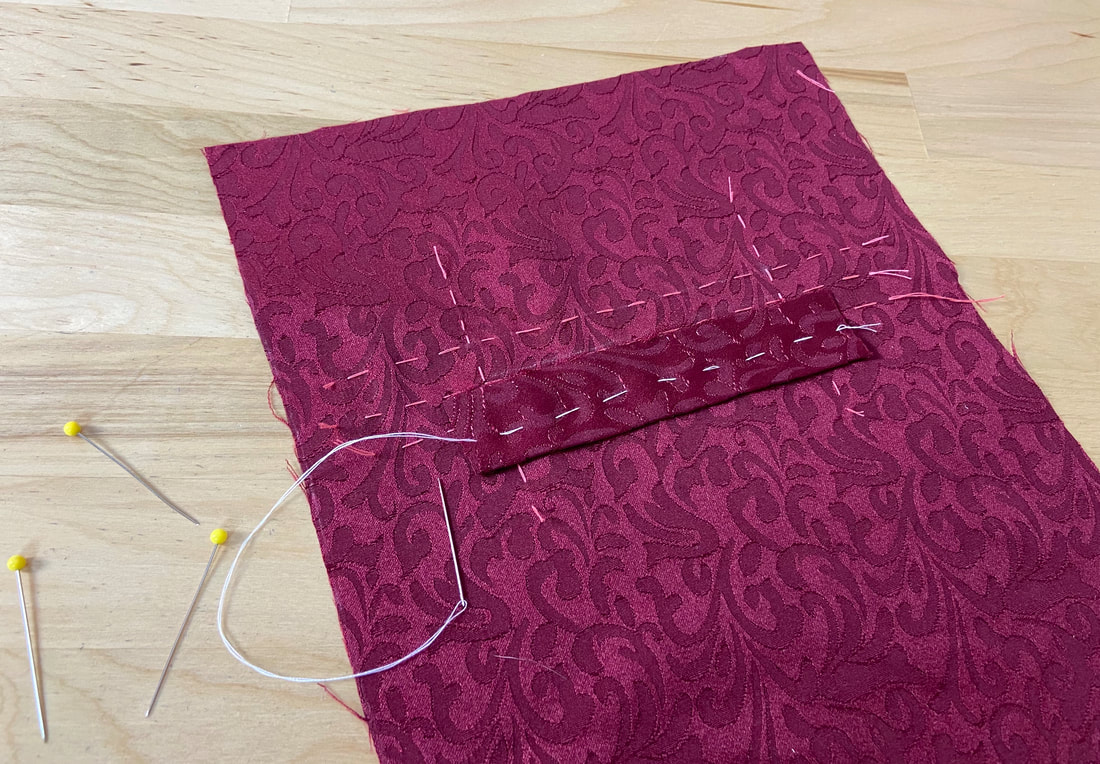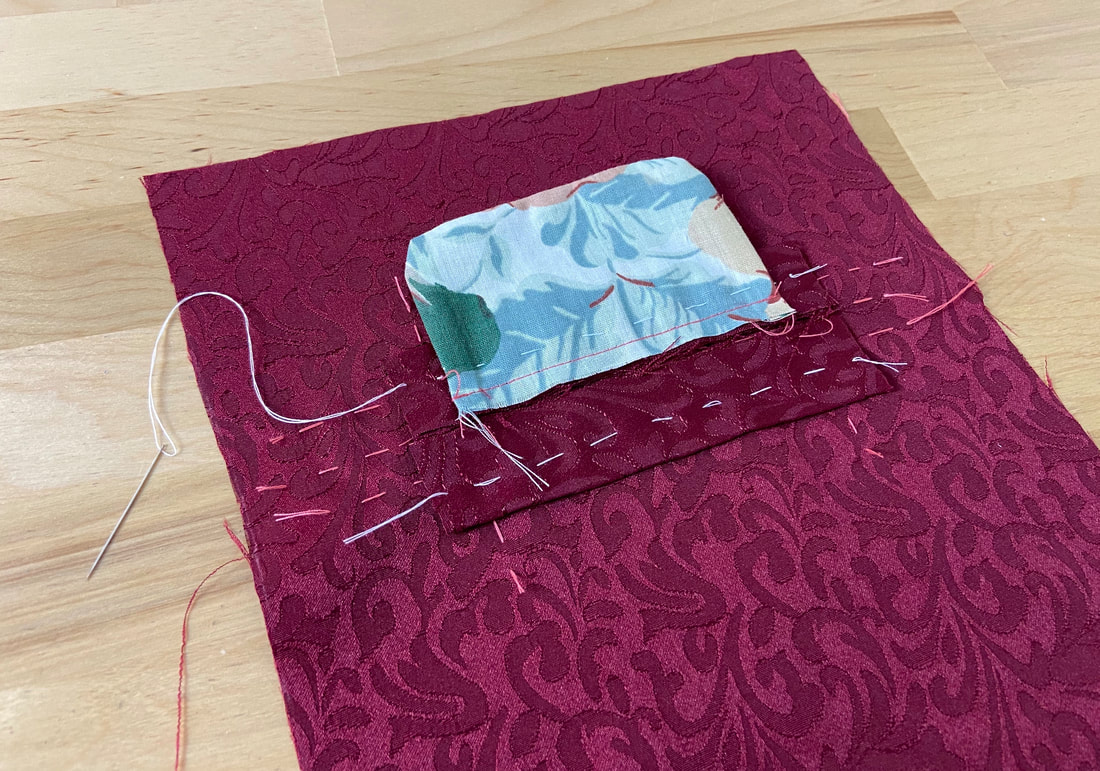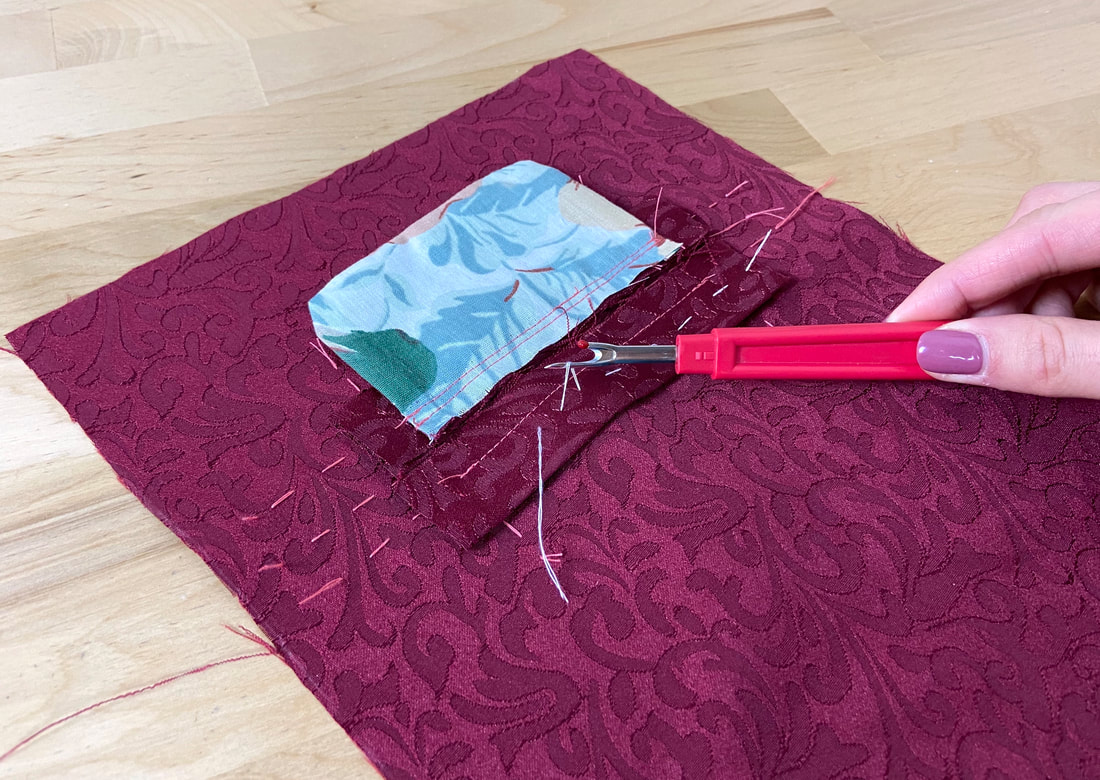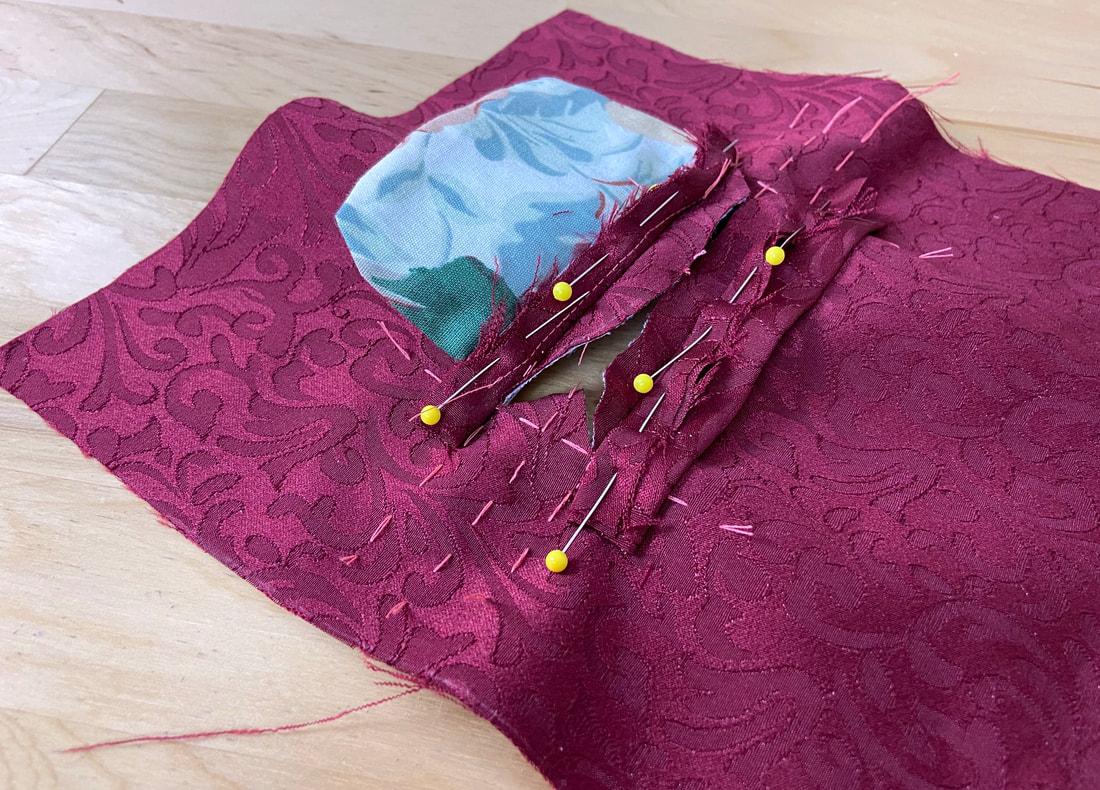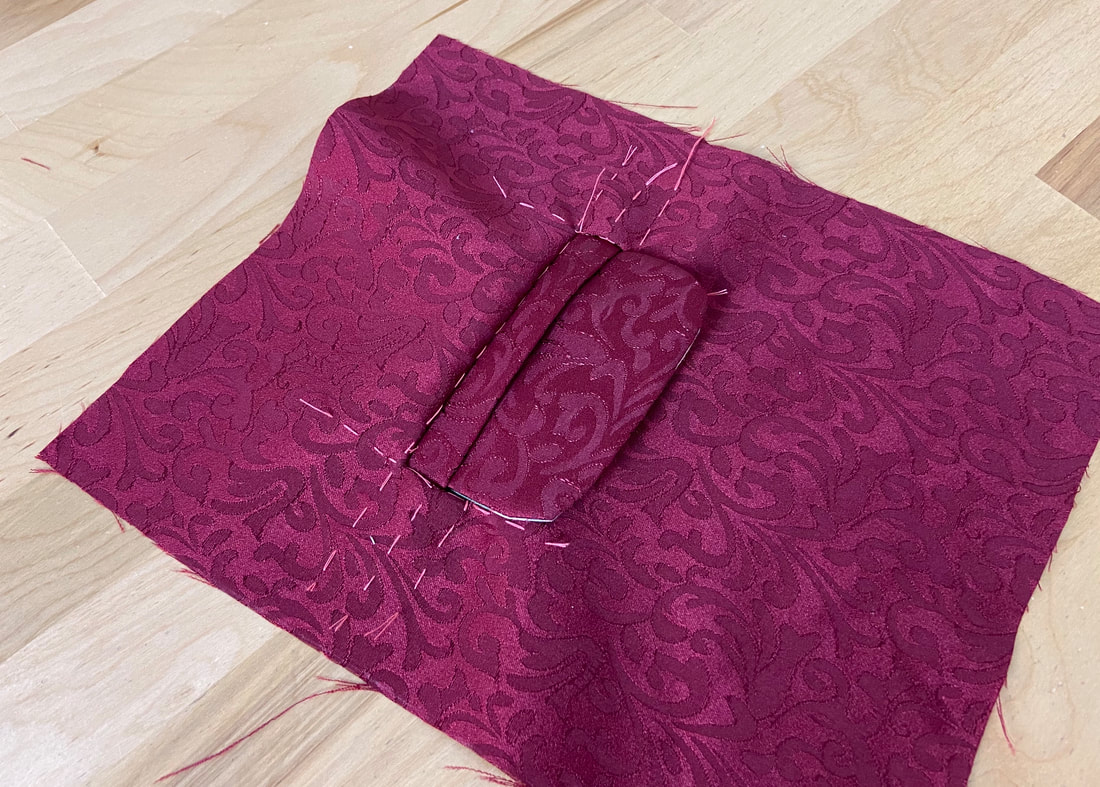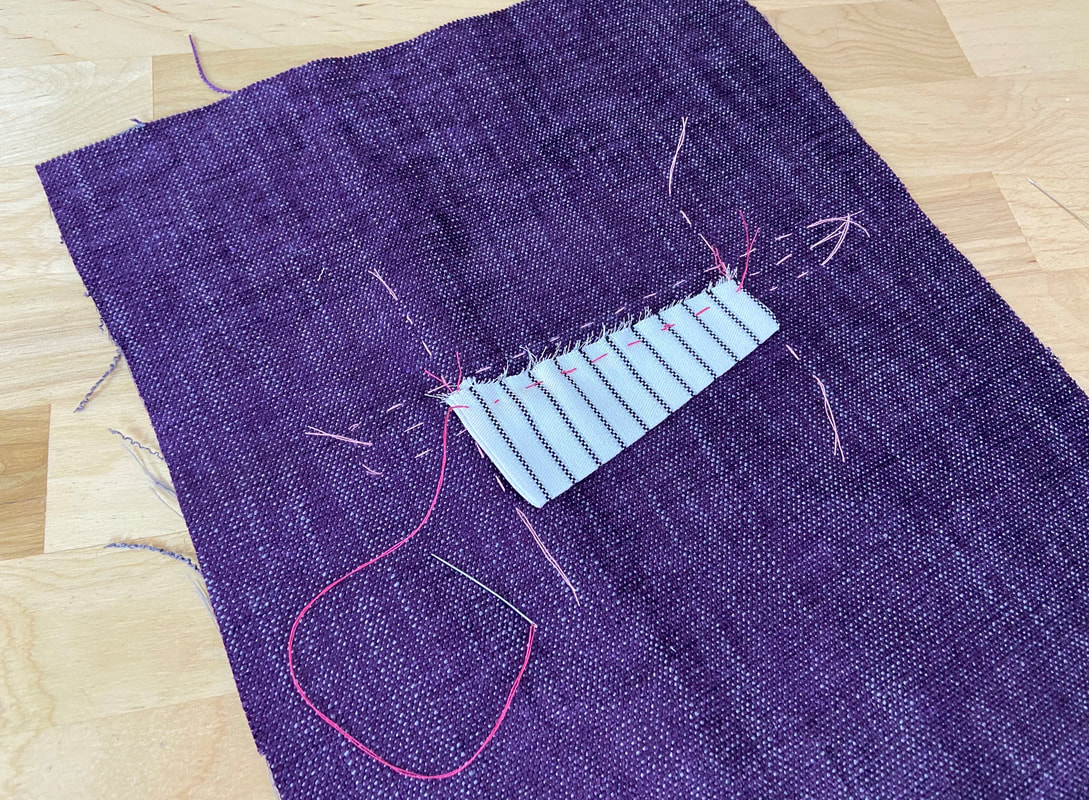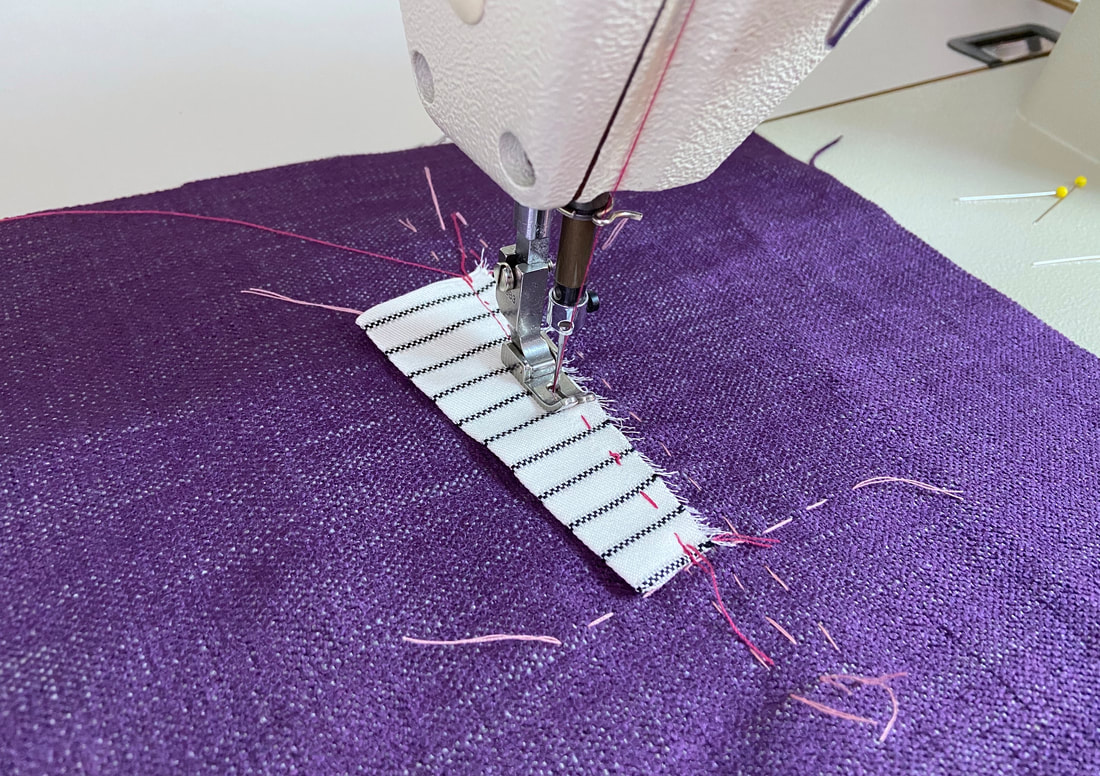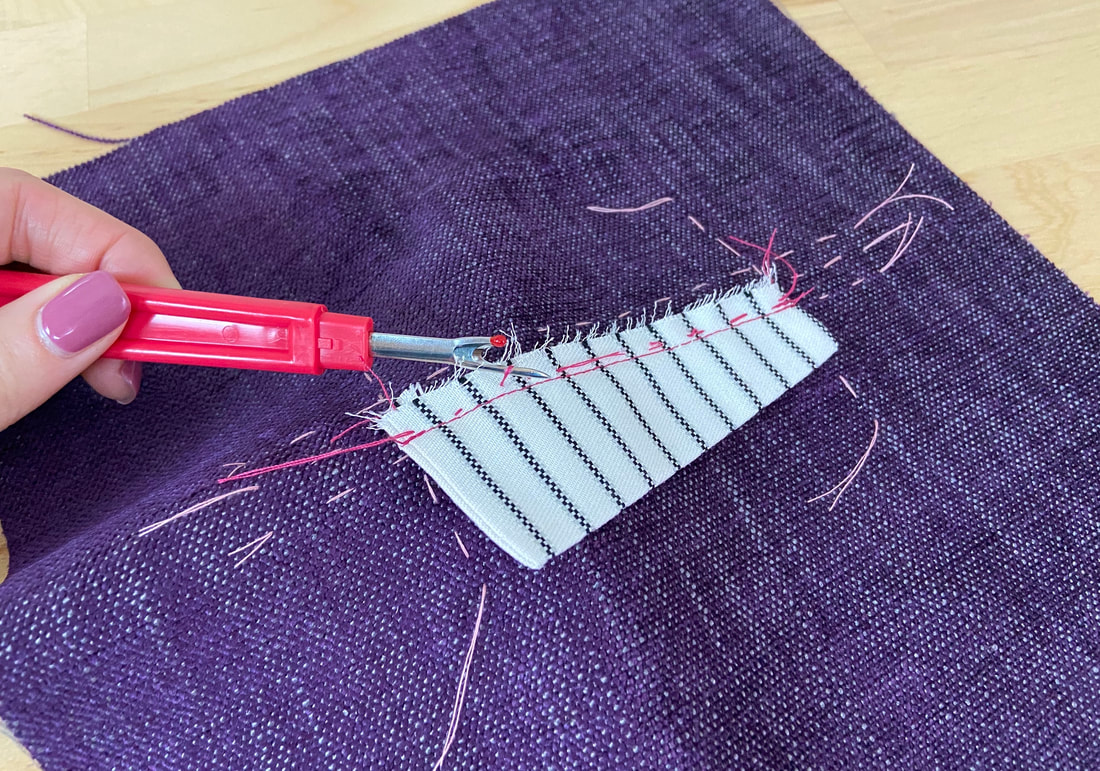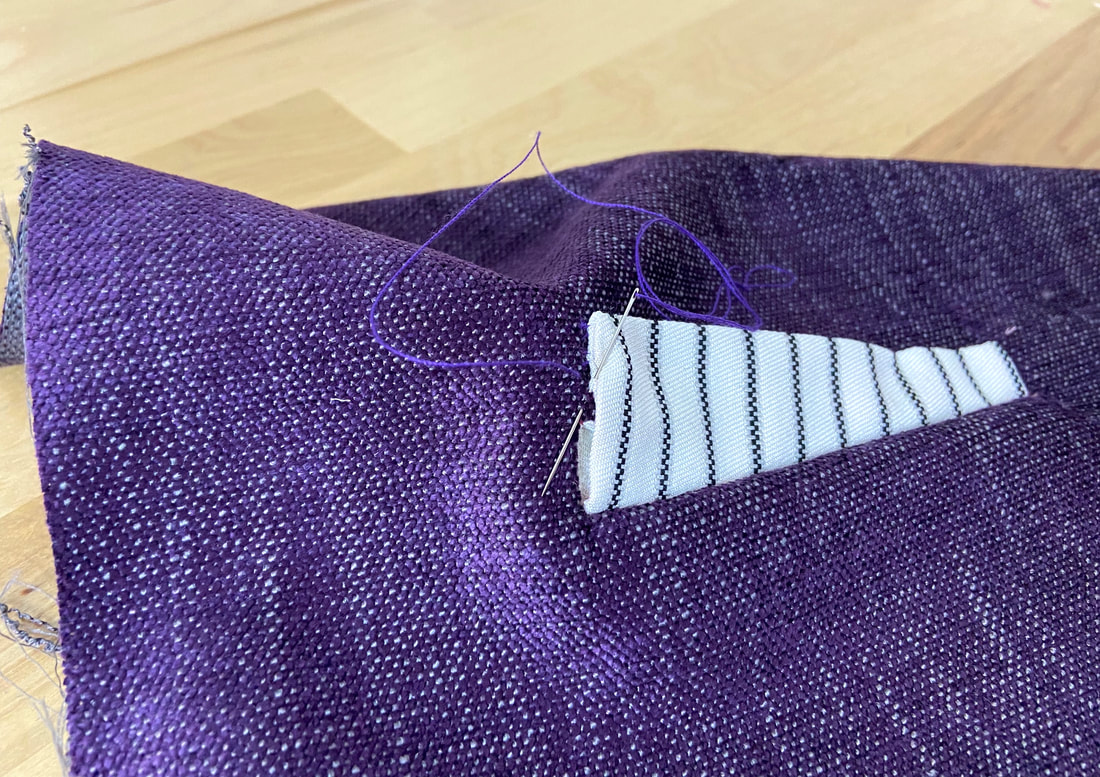How To Stabilize Pocket Welts And Flaps In The Sewing Process
When sewing slash pockets, it is helpful to hand baste flaps and welts in their accurate location prior to machine stitching them to the pocket opening. Their accuracy and stability will determine how clean and even the finished slash pocket opening will be.
Since it prevents fabric layers from shifting out of alignment under the presser foot during the machine stitching process, hand basting provides a much better alternative to using pins alone. This is especially important when sewing welt pockets.
In the welt-flap pocket application shown above, not only do the sides of the two welts have to align perfectly, the flap should remain centered on the top welt, within the pocket's precise opening lines. Hand basting ensures that all layers remain stably aligned in this manner, while also providing increased comfort during the machine stitching process.
In the welt-flap pocket application shown above, not only do the sides of the two welts have to align perfectly, the flap should remain centered on the top welt, within the pocket's precise opening lines. Hand basting ensures that all layers remain stably aligned in this manner, while also providing increased comfort during the machine stitching process.
The beauty of hand basting is that it can be easily removed using a seam ripper once the welt and flap pieces are finally stitched. At this point, the basting is no longer needed.
An important aspect to keeping the pocket welts and flap perfectly aligned during the machine stitching process is that the pocket's top and bottom stitch lines have to end along the same line both at the top and bottom. These two stitches have to be centered on the corresponding top and bottom welt pieces and the flap has to fit perfectly within this stitch.
The pocket opening is cut, each pocket opening corner should correspond to each stitch end. If these stitches are not placed perfectly in relation to one another and in relation to all other pocket components, the pocket opening will be uneven.
The pocket opening is cut, each pocket opening corner should correspond to each stitch end. If these stitches are not placed perfectly in relation to one another and in relation to all other pocket components, the pocket opening will be uneven.
If stitched correctly, the finished pocket opening will have a perfectly rectangular shape, with well-defined straight corners. The flap should fit perfectly within the pocket opening bounds as shown above. When it comes to sewing welt pockets, stitch precision is key in achieving a clean, professional finish.
Hand basting plays an important role when sewing asymmetric welts. These are aligned and stitched similar to flaps. Similarly, the clean-finished welt piece should fit perfectly within the pocket opening sides such that when finished, it fully covers the pocket opening edges.
Using hand basting in lieu of pins (when aligning and stitching the welt to the pocket opening), will ensure that the welt does not shift, even slightly, out of alignment, maintaining its alignment within the pocket opening bounds.
Once the welt portion is attached, the hand basting can be easily removed using a seam ripper.
When the pocket opening is cut to expose its clean-finished edges, the individual welt should align with the pocket opening sides and once blind stitched (as pictured above), the welt should fully cover the pocket opening.

